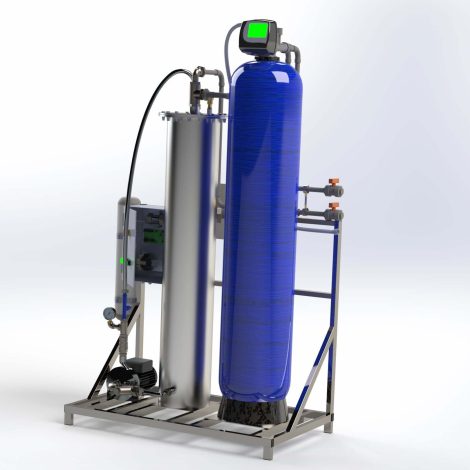Iron removal
In Lithuania, the concentration of dissolved iron in underground water varies from several hundred to ten mg/L, therefore, before supplying such water to consumers, iron must be removed in many cases to reach the value of 0.2 mg/L set by the hygiene standard. Currently, we can offer different capacity (from 1 m3 to 30 m3/hour) preparation devices for iron removal in drinking water, which use ambient air or ozone for the oxidation of divalent iron.
The formed insoluble iron sediments are filtered through a granular charge filter, for which the charge is carefully selected by specialists for each case.
We offer conventional inert quartz sand, as well as catalytic charges, which have a better overall iron removal efficiency. In addition, using this type of loading significantly reduces the time required for the filter to reach dynamic equilibrium after system start-up.
